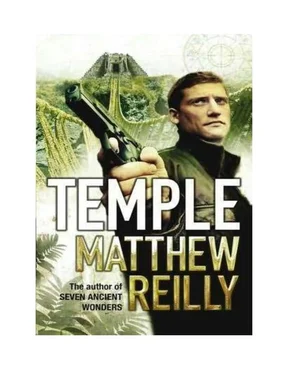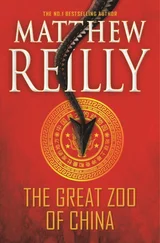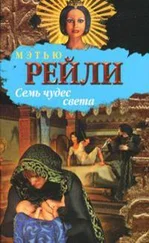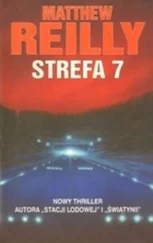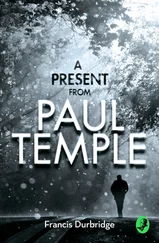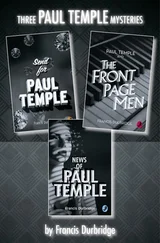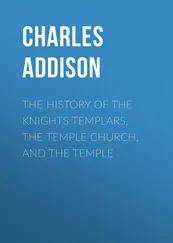
Matthew Reilly
Temple ~ Matthew Reilly
INTRODUCTION From: Holsten, Mark J.
Civilization Lost—The Conquest of the Incas (Advantage Press, New York, 1996)
‘CHAPTER I: THE CONSEQUENCES OF CONQUEST
.. What cannot be emphasised enough is that the conquest of the Incas by the Spanish conquistadors represents perhaps the single greatest collision of cultures in the history of human evolution.
Here was the most dominant seafaring nation on earth— bringing with it all the latest steel technology from Europe —-clashing with the most powerful empire ever to have existed in the Americas.
Unfortunately for historians, and thanks largely to the insatiable gold lust of Francisco Pizarro and his blood thirsty conquistadors, the greatest empire to have inhabited the Americas is also the one about which we know the least.
The plunder of the Incan empire by Pizarro and his army of henchmen in 1532 must rank as one of the most brutal in written history. Armed with that most overwhelming of colonial weapons—gunpowder—the Spaniards cut a swathe through Incan towns and cities with “a lack of principle that would have made Machiavelli shudder” to use the words of one twentieth-century commentator.
Incan women were raped in their homes or forced to work in filthy makeshift brothels. Men were routinely tortured-their eyes would be burned out with hot coals or their tendons cut. Children were shipped to the coast by the hundred, to be loaded onto the dreaded slave galleons and taken back to Europe.
In the cities, temple walls were stripped bare. Gold plates and holy idols were melted into bars before anyone even thought to inquire as to their cultural significance.
Perhaps the most famous of all the tales of quests for Incan treasure is that of Hernando Pizarro—Francisco’s brother—and his Herculean journey to the coastal town of Pachacimac in search of a fabled Incan idol. As described by Francisco de Juarez in his famous work, the Verdadera relaci6n de la conquista de la Peru, the riches that Hernando plundered on his march to the temple-shrine at Pachacimac (not far from Lima) are of almost mythic proportions.
From what little remains of the Incan empire buildings that the Spaniards did not destroy, golden relics that the Incas spirited away in the dead of night—the modern historian can only garner the barest of glimpses of a once great civilisation.
What emerges is an empire of paradox.
The Incas did not have the wheel, and yet they built the most extensive road system ever seen in the Americas. They did not know how to smelt iron ore, yet their metalwork with other substances—in particular, gold and silver—was second to none. They had no form of writing, and yet their system of numerical record-keeping—multicoloured string formations known as a quipus—was incredibly accurate. It was said that the quipucamayocs, the empire’s feared tax collectors, would know even when something so small as a sandal went missing.
Inevitably, however, the greatest record of everyday Incan life comes from the Spaniards. As Cortez had done in Mexico only twenty years previously, the conquistadors in Peru brought with them clergymen to spread the Gospel to the heathen natives. Many of these monks and priests would ultimately return to Spain and commit what they ‘saw to writing, and indeed, these manuscripts can still be found in monasteries around Europe today, dated and intact…’ [p. 12]
From: de Juarez, Francisco
Verdadera relaci6n de la conquista de la Peru (Seville, 1534)
‘The Captain [Hernando Pizarro] went to lodge, with his followers, in some large chambers in one part of the town.
He said that he had come by order of the Governor [Francisco Pizarro] for the gold of that mosque, and that they were to collect it and deliver it up.
All the principal men of the town and the attendants of the Idol assembled and replied that they would give it, but they continued to dissimulate and make excuses. At last they brought very little, and said they had no more.
The Captain said that he wished to go and see the Idol they kept, and he went. It was in a good house, well painted, decorated in the usual Indian style—stone statues of jaguars guarded the entrance, carvings of demonic cat like creatures lined the walls. Inside, the Captain found a dark foulsmelling chamber, in the centre of which stood a bare stone altar. On our journey we had been told of a fabled idol that was housed inside the temple-shrine at Pachacimac. The Indians say that this is their God who created them and sustains them, and who is the source of all their power.
But we found no idol at Pachacmac. Just a bare altar in a foulsmelling room.
The Captain then ordered the vault in which the pagan Idol had been housed be pulled down and the principal men of the town be executed at once for their dissembling. So, too, the attendants to the Idol. Once this was done, the Captain then taught the villagers many things touching our Holy Catholic Faith, and taught them the sign of the cross…’
From: The New York Times
December 31 1998, p. 12
Scholars Go Ga-Ga Over Rare Manuscripts
TOULOUSE, FRANCE: Medieval scholars were presented with a rare treat today when monks from the San Sebastian Abbey, a secluded Jesuit monastery in the Pyrenees Mountains, opened up their magnificent medieval library to a select group of non-ecclesiastical experts for the first time in over three hundred years.
Of key interest to this exclusive gathering of academics was the chance to see firsthand the abbey’s renowned collection of handwritten manuscripts, notably those of St Ignatius Loyola, the founder of the Society of Jesus.
It was, however, the discovery of certain other manuscripts—long since believed to have been lost that sparked cries of delight from the select group of historians who were granted entry to the abbey’s labyrinthine library.
The lost codex of St Aloysius Gonzaga, or a heretofore undiscovered manuscript believed to have been written by St Francis Xavier, or—most wonderfully of all the discovery of an original draft copy of the fabled Santiago Manuscript.
Written in 1565 by a Spanish monk named Alberto Luis Santiago, this manuscript commands almost legendary status among medieval historians principally because it was assumed to have been destroyed during the French Revolution.
The manuscript is believed to outline in the most stark, brutal detail the conquest of Peru by the Spanish conquistadors in the 1530s.
Famously, however, it is also understood to contain the only written account (based on its author’s firsthand observations) of a murderous Spanish captain’s obsessive hunt for a precious Incan idol through the jungles and mountains of Peru.
Ultimately, however, this was to be a ‘look-but-don’t-touch’ exhibition.
After the last scholar was (reluctantly) escorted from the library, its massive oak doors were firmly sealed behind him.
One can only, hope that it won’t be another three hundred years before they are opened again.
PROLOGUE
San Sebastian Abbey High in the French Pyrenees
Friday, January 1 1999, 3:23 am
The young monk sobbed uncontrollably as the cold barrel of the gun was placed firmly against his temple.
His shoulders shook. Tears streamed down his cheeks.
‘For God’s sake, Philippe,’ he said. ‘If you know where it is, tell them!’
Brother Philippe de Villiers knelt on the floor of the abbey’s dining area with. his hands clenched behind his head. To his left knelt Brother Maurice Dupont, the young monk with the gun to his head, to his right, the other sixteen Jesuit monks who lived in the San Sebastian Abbey.
Читать дальше
